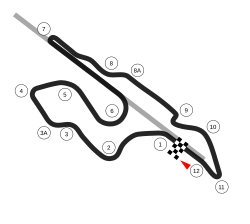Sears Point

Sears Point is a prominent landform that juts into the San Pablo Bay in Sonoma County, California, United States. This hill is the southernmost peak of the Sonoma Mountains and forms the southwestern ridge above Tolay Lake. Starting with European settlement of this area in the mid-19th century considerable modification of the Napa Sonoma Marsh began to occur, such that in contemporary times, there is considerable upland between Sears Point and San Pablo Bay. Numerous local conservation organizations are presently working to restore hundreds of acres of these historic tidal wetlands as part of the Sears Point Wetlands and Watershed Restoration Project. The region can be accessed via State Route 37 or State Route 121. Sears Point was named after Franklin Sears, who settled on 600 acres (2.4 km2) south of Sonoma in 1851. Later, he partnered with his father-in-law to purchase some 15,000 acres (61 km2), part of which is the present day racetrack, Sonoma Raceway.
Excerpt from the Wikipedia article Sears Point (License: CC BY-SA 3.0, Authors, Images).Sears Point
Toulay Creek Road,
Geographical coordinates (GPS) Address Nearby Places Show on map
Geographical coordinates (GPS)
| Latitude | Longitude |
|---|---|
| N 38.151111111111 ° | E -122.44777777778 ° |
Address
Toulay Creek Road 29790
California, United States
Open on Google Maps







